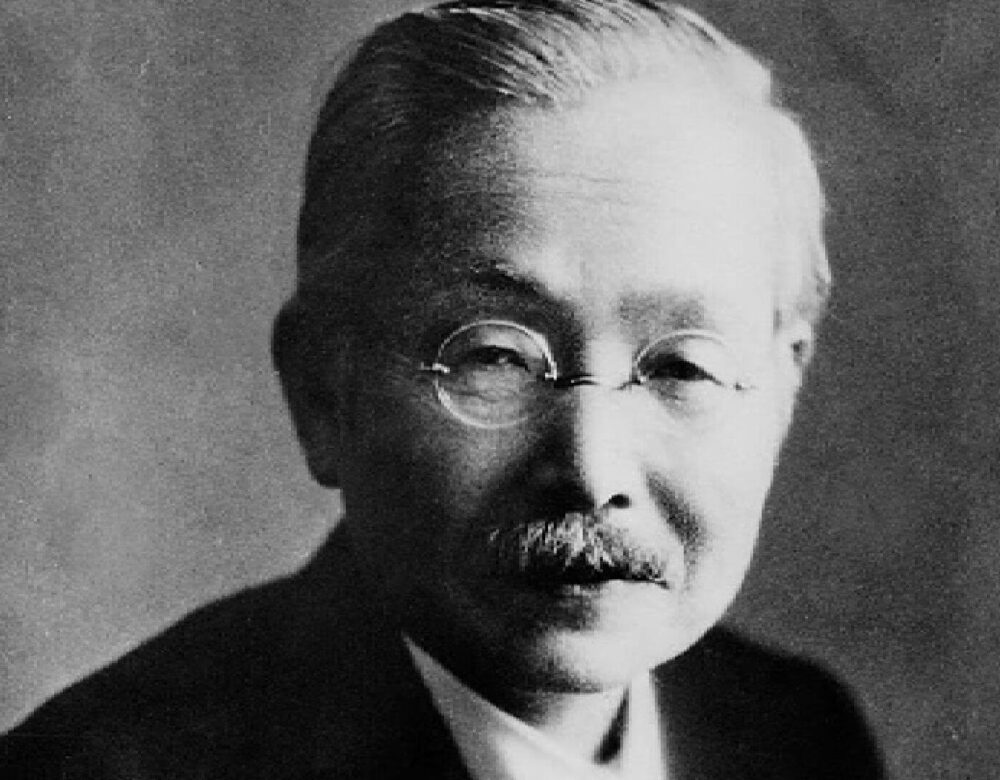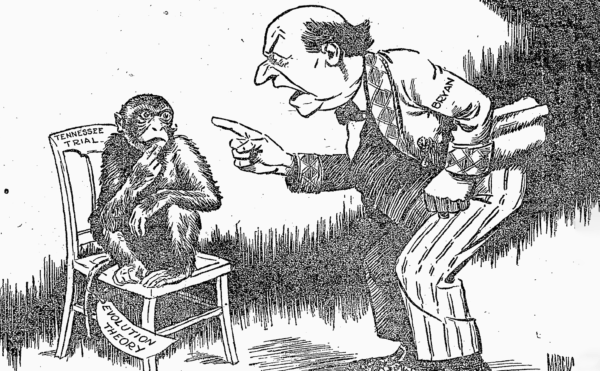Sweet, salty, bitter, sour. That’s how people had thought about food for thousands of years . . . until about a hundred years ago when Japanese chemist Dr. Kikunae Ikeda changed how we think about taste.
About The Disappearing Spoon
The Science History Institute has teamed up with New York Times best-selling author Sam Kean to bring a second history of science podcast to our listeners. The Disappearing Spoon tells little-known stories from our scientific past—from the shocking way the smallpox vaccine was transported around the world to why we don’t have a birth control pill for men. These topsy-turvy science tales, some of which have never made it into history books, are surprisingly powerful and insightful.
Credits
Host: Sam Kean
Senior Producer: Mariel Carr
Producer: Rigoberto Hernandez
Associate Producer: Sarah Kaplan
Audio Engineer: Jonathan Pfeffer
Transcript
The question seemed so simple. What does this broth taste like?
A Japanese chemist named Kikunae Ikeda asked himself that question one day in 1907. He was sipping a savory broth called dashi. And he considered each of the four basic tastes in turn. Was this broth sweet? Salty? Bitter? Sour?
For 2,300 years, ever since Aristotle, that’s how people thought about food, in terms of those four elements—sweet, salty, bitter, and sour.
But to Ikeda, the dashi broth did not taste like any of those things. He could taste something else in dashi, beyond the usual quartet. But what?
Then he remembered something. A decade earlier, at age 35, Ikeda had been studying chemistry in graduate school in Germany. Frankly, he found it hard to fit in there. He struggled with the language and with the unusual customs.
But he enjoyed the exotic foods. He ate strange things like tomatoes and cheese. He could still remember the surprise of biting into them the first time—the memories were vivid.
And now, Ikeda sensed that his broth shared some quality with those German foods. He wondered if there was some common element to them all, deep down.
It turns out that Ikeda was right. Those foods did share something deep down. And much like with Proust’s madeleine cookie, that sip of dashi broth opened up a whole new world for Ikeda.
Despite serious doubts from the Western world, Ikeda would upend 2,300 years of science, and transform the palates of human beings worldwide. It turns out that it’s just not true that there’s no accounting for taste.
Kikunae Ikeda was a slight man with glasses, bushy hair, and a trim mustache. His ancestors were samurai warriors. But the family had fallen on hard times when Ikeda was born in 1864. He actually had to sell his bed as a young man to scratch together enough money for college.
In college, he read voraciously—economics, religion, everything. He could read Shakespeare in the original, and he taught Shakespeare courses at night for extra money.
He eventually chose to study chemistry. Like all ambitious scientists then, he did a stint in Germany, the most advanced scientific nation on Earth. As mentioned, he also sampled odd foods there like tomatoes and cheese.
After moving back to Japan, he became a professor in Tokyo. And one night in 1907, he sat down to a bowl of dashi. It’s a broth made from kelp. It’s got a briny, kind of meaty taste, and it’s used in ways similar to veggie stock.
During that meal, Ikeda had his madeleine moment: he sensed a new taste in the broth. And he linked it to the tomatoes and cheese he’d eaten in Germany. So he decided to use his chemistry skills to figure out what that unsalty, unsour, unsweet, unbitter taste was.
He started by boiling down ninety pounds of kelp into a tarry resin. He then washed the resin with various chemicals to strip out different compounds. It was messy work, and took him months. At the end, he’d harvested a single ounce of brown crystals.
Frankly, they looked unpromising as food. More like sand. But when Ikeda tasted one—pow! That dashi flavor exploded in his mouth. He had found it—the essence of that elusive taste. Ikeda called the new taste umami, from the Japanese word for savory.
Some chemical tests revealed that these umami crystals were a substance called glutamate. So Ikeda began searching for glutamate in other foods. He found high concentrations in meat and fish. As well as, you guessed it, tomatoes and cheese. His intuition was right: dashi and those foods did have deep links.
Ikeda then tried a few cooking experiments. He began adding glutamate crystals to certain dishes. To his delight, even a modest amount made the dishes taste more savory and satisfying. Just a little sprinkle, and pow! The food tasted richer and fuller.
Beyond these experiments, Ikeda began wondering why human beings taste umami at all. It’s a good question. Because the other four basic flavors all alert us to something good or bad in food.
Sweetness signals carbohydrate energy. Saltiness means mineral nutrition. Bitterness means alkaline poisons, which are common in plants. Sourness means acid, which can indicate rotten food.
So what does umami alert us to? Ikeda realized the answer was simple. Protein. Glutamate is an amino acid, one of the building blocks of proteins. So by developing a taste for umami, human beings could detect this important resource in our food.
Umami also intersects with an important human invention—cooking. We taste umami at much higher levels in cooked foods. For instance, raw hamburger has little umami taste, because the glutamate is bound up inside large protein molecules. In contrast, grilled hamburgers are oozing with umami, because cooking breaks down proteins and breaks open cells, making the glutamate easier to taste.
That’s important evolutionarily because cooked foods are safer than raw foods, especially raw meat. Cooking also unlocks more nutrition and calories in food. Overall, then, people who ate cooked, umami-rich food had a better chance of surviving.
Still, despite its importance, umami is probably our most neglected taste. We all learned about Aristotle’s sweet-salty-bitter-sour framework in grade school. But more than a century after Ikeda, many people have never even heard of umami, much less him.
The other four tastes have crept into our language as well. We talk about “sweethearts” and “bitter disappointments.” The same with “sour looks” and “salty language.” But no one talks about how they’re feeling umami-y today. Psychologically, we simply haven’t incorporated this taste to the same degree.
But our tongues know better. To get a sense of how important the umami taste is, consider this. When glutamate is dissolved in water, we can taste the glutamate at concentrations six times lower than we can taste sugar. And taste it at concentrations sixteen times lower than salt. Our tongues are very, very good at detecting glutamate.
We can also see the importance of umami in the architecture of the tongue.
Just below the surface of the tongue sit specialized cells called taste buds. Different types of taste buds specialize in detecting each of the classic flavors.
Salt and sour tastebuds function in similar ways. A salty taste usually arises from sodium ions—like in sodium chloride, table salt. A sour taste arises from the hydrogen ions in acids. Sodium and hydrogen ions enter taste-bud cells through special gates on the cells’ surface. As they stream inside, they ping the brain that what we’re eating is salty or sour.
Bitter and sweet taste buds work a little differently. Bitter and sweet molecules are big and bulky. So instead of streaming inside taste buds, they lock onto receptors on the buds’ surface. Each receptor has a different shape. And each different bitter or sweet molecule fits that receptor like a lock into a key. Once the molecule key is inserted, the receptor pings the brain about this taste.
So what about umami? Does it have special receptors?
For decades, scientists said no. Which seemed like a big strike against the idea that umami was a “real” taste. How could it be?, if our tongues didn’t recognize it with special receptors.
Well, it turns out that scientists just weren’t looking hard enough. It was a classic case of theory blinding people to reality. In the early 2000s, some Japanese scientists began looking for umami receptors in earnest. Lo and behold, they were right there. Just like sweet and bitter, we have lock-and-key receptors for umami in our tongues.
The discovery of umami receptors rocked the world of sensory science. How could they have missed something so basic? It also forced many scientists to wonder: Could there be other basic tastes, beyond the big five?
Perhaps. Several candidates have emerged.
Have you ever wondered why you sweat and flush red when you eat spicy chili peppers? That spice-heat is due to a molecule called capsaicin.
Capsaicin happens to be the right shape to tickle the temperature sensors in our mouths. So when we eat chili peppers, our mouths are fooled into thinking it must be hot outside. Hence, we start sweating.
Something similar happens with menthol, a compound in mint. Menthol happens to be the right shape to tickle the cold sensors in our mouths. That’s why mints taste cool and refreshing.
Some scientists argue that capsaicin and menthol should count as new, basic tastes. And they have a point. Our tongues can detect both of these molecules. And they produce physiological reactions. They’re also distinct, in that they aren’t really sweet, salty, bitter, sour, or umami.
Then again, there are counterarguments to counting these as separate tastes. First of all, temperature receptors aren’t specialized for capsaicin or menthol. Those molecules simply fool the receptors for other things. Second, there are good evolutionary reasons for us to detect sweet, salty, bitter, sour, and umami. Why would we need to detect peppers or mint? There’s no survival advantage there.
That’s why most scientists consider capsaicin and menthol pseudo-tastes. In fact, they’re maybe better classified as touch sensations.
Similar arguments are levied against another candidate for a basic taste—carbonation.
Carbonation arises from carbon dioxide bubbles. You’re already aware that humans can taste CO2 bubbles if you’ve ever tried to drink a flat pop or a flat beer. Without the added CO2 flavor, they’re awful. And just like with other tastes, scientists have found evidence that receptors on our tongues can detect CO2 bubbles.
Then again, those receptors seem to be the same receptors that detect sour. And CO2 does interact with water to form carbonic acid. So maybe the lack of CO2 in flat pop and beer is just a lack of sour acidity. Also, evolutionarily, our ancestors did not need fizzy drinks to survive. Although given our national seltzer and pop addiction these days, maybe that is changing. Seriously, there is no reason natural selection would prime our tongues to taste CO2.
A third candidate for a new basic taste is calcium. You can summon up the taste of calcium if you’ve ever smelled chalk, or maybe gotten some in your mouth as a kid if you had to clap erasers.
Once again, there’s some evidence that we have receptors on our tongues for calcium. And this time, there would be a good evolutionary reason for tasting it, since calcium is vital for cell function and bone structure.
At the same time, physiologically, the ability to taste calcium seems unnecessary. Eating sodium-rich salt kicks off a series of biochemical reactions in our bodies that release calcium from inside our cells. This frees calcium up and makes it more available for our bodies to use.
In fact, some scientists argue that salt cravings, deep down, are really just secret calcium cravings. So when we want pretzels or potato chips, maybe that’s just our body’s roundabout way of liberating calcium when the body is running low. And if salt cravings release calcium anyway, why would we need separate calcium taste sensors?
There’s another reason to doubt calcium, too. Lord knows we have all craved sugary or salty or fatty foods sometimes. But I don’t ever recall a craving for chalk. In fact, chalk tastes kind of crappy. And why would evolution make a vital nutrient taste bad? Overall, the jury remains out on calcium.
A final candidate for a basic taste is fat. Stop me if you’ve heard this, but there’s evidence that we have specialized fat receptors on our tongues. In addition, there are unlucky people out there who’ve severed the taste nerves in their tongue. And suddenly, afterward, fats did not taste nearly as good to them. In fact, the fats tasted kinda gross and slimy.
To hear more about these unlucky folks, check out the bonus episode at patreon.com/disappearingspoon. You’ll also hear about other disorders that mess with people’s sense of taste—including some poor souls who cannot taste food at all. All that and more at patreon.com/disappearingspoon.
Another reason that fat might be a basic taste is that our ancestors needed dense, calorie-rich fats long ago to survive. Just like we needed salts, sugars, and proteins.
But there’s one snag with the idea that fats are a distinct taste. Namely, that it’s really, really hard to separate fat taste from fat texture. Fats tend to be creamy and smooth. They coat the tongue and often melt from solid form to liquid right around body temperatures.
This tight coupling of taste and texture makes it hard for scientists to isolate and study the taste of fat alone. What we perceive as fat taste might just be texture and touch cues. That would make fat more like capsaicin or menthol than a true taste.
Given the flaws of other potential candidates, the number of basic tastes remains fixed at five for now. Which is fine—chefs and food scientists have enough of a job educating people about umami.
Indeed, some people today still actively resist umami. Because there are ridiculous rumors floating around that the glutamate in umami is dangerous, rumors dating all the way back to Kikunae Ikeda.
In 1908, a year after discovering umami, Ikeda opened a factory to manufacture a new type of umami-rich seasoning. He did so partly to make money, but partly with a charitable goal.
Most Japanese people then scratched out a hard living as farmers. Their meals consisted mostly of plain rice and vegetables—not exactly hearty fare. Ikeda thought that creating a seasoning based on savory glutamate would make people’s food taste more satisfying and filling.
Each batch of glutamate seasoning required months of labor. Workers had to mush up plant remains and boil them in acid baths to make glutamate crystals. Then they smashed the crystals with hammers and packaged the brown powder for sale. Ikeda called the seasoning Ajinomoto, Japanese for “essence of flavor.”
Ikeda eventually discovered that adding a bit of table salt made the Ajinomoto crystals taste even better. Chemically, then, Ajinomoto was a blend of glutamate and sodium chloride. And it just so happened each glutamate molecule had one sodium ion attached to it. In other words, Ajinomoto was monosodium glutamate—MSG.
But wait! M-S-G. Isn’t that stuff poison? Well, no. MSG is actually the victim of a smear campaign. A smear campaign fueled by hysteria, mass psychosis, urban legends, and above all, shoddy science. It is a wild tale. And I encourage you to tune in next week’s episode to hear all about it…




